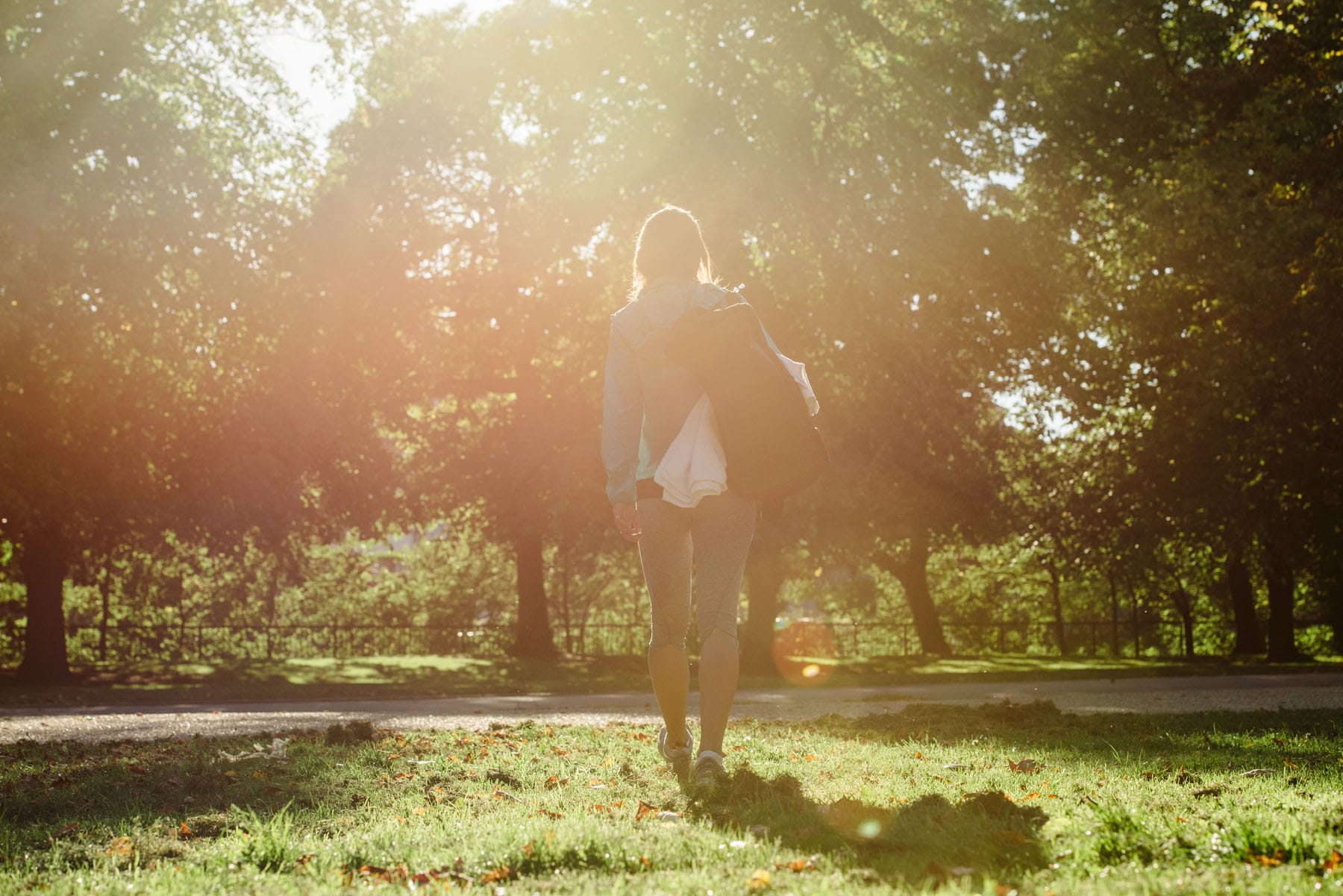Understanding Different Types of Headaches Part 1: Migraine, Tension, and Cervicogenic

Pure Sports Medicine
- 7 December, 2020
- Neurology
- 6 min read
Understanding Different Types of Headaches Part 1: Migraine, Tension, and Cervicogenic

More than 90% of the population experience a headache at some point in their life. (1)
For some this may just be a reminder that 4 pints after work wasn’t a great idea, while for others, the regular occurrence of headaches can affect quality of life and work productivity. (2)
In Part 1 of this 2 part blog series, I will highlight headache features which may suggest an underlying medical condition, that require further assessment by a healthcare professional. Following that, we’ll explore three of the most common types of headaches; migraine, tension-type headache and cervicogenic headache, and the mechanism by which they are thought to occur.
In Part 2, Headaches Part 2: What Can I Do? I will focus on the role of Physiotherapy in the assessment and management of headaches.
Red Flags
‘Red flags’ refer to signs and symptoms found in someone’s medical history or clinical examination, which may suggest a more serious underlying condition. (3) Although relatively rare, some people may have a secondary headache due to an underlying pathology – for example, from the overuse of medication, an infection or cancer. (4)
Red flags include:
- Systemic symptoms (including fever)
- History of cancer
- Neurological deficit (including decreased consciousness, loss of balance, visual disturbances, drooping of the face, arm or leg weakness, or speech difficulty)
- Sudden or abrupt onset (high-intensity headache reaching a maximum intensity in <1minute)
- Older age (onset after 50 years)
- Pattern change or recent onset of new headache (e.g. vomiting with a tension-type headache)
- Precipitated by sneezing, coughing, or exercise
- Papilledema (swelling of the optic nerve from increased intracranial pressure – identified by your GP or Eye Doctor)
- Progressive headache and atypical presentations
- Pregnancy or puerperium (6-weeks after childbirth)
- Post-traumatic onset of headache
- Painkiller overuse or new drug at onset of headache
These red flags act to alert your Physician, that you may have a secondary headache. As useful as these are, they are however not very specific, which means that you may have one or more of these red flags without any underlying pathology. (4)
A thorough history of your headache characteristics combined with a clinical examination will allow your treating clinician to determine if further investigations or tests are required.
Types of Headaches
The International Classification of Headache Disorders 3rd edition (ICHD-3) lists 14 different headache types. (5) Headaches are then further sub-classified depending on specific characteristics such as frequency of headache attacks or the presence of aura in migraine. Overlapping features (e.g. the presence of neck dysfunction) as well as the presence of multiple or mixed headache forms (estimated to occur in 55% of people) can create a diagnostic challenge for your clinician. (6)
Three types of headaches commonly seen in clinic include:
- Migraine (with and without aura)
- Tension-type headache (TTH)
- Cervicogenic headache (cervico = neck, genic = producing or causing)
Migraine
Migraine is ranked as the third most prevalent disorder in the world, as well as the third-highest cause of disability worldwide in people under 50 years old. (5)
The ICHD-3 describes migraine without aura as a:
Recurrent headache disorder manifesting in attacks lasting 4-72 hours. Typical characteristics of the headache are unilateral location, pulsating quality, moderate or severe intensity, aggravation by routine physical activity and association with nausea and/or photophobia (light sensitivity) and phonophobia (sound sensitivity).
Migraine was previously thought to be a vascular headache; however, it is now known to be a neurobiological disorder – a dysfunction of the brain/nervous system. The increased responsiveness of the nervous system is likely to play an important role in the development of a migraine. (5)
This is similar to what occurs in cervicogenic headaches, and some research has shown the presence of musculoskeletal dysfunction, for example, neck muscle weakness, in people with migraine. (6) This finding provides the basis for treatments aimed at desensitising the nervous system (referred to as pain pathways) and addressing neck impairments, where necessary.
The ICHD-3 describes migraine with aura as:
Recurrent attacks, lasting minutes, of unilateral fully-reversible visual, sensory or other central nervous system symptoms that usually develop gradually and are usually followed by headache and associated migraine symptoms.
Some people may also experience other symptoms hours, or days before the headache has begun – or even once the headache has resolved. These symptoms include:
- Hyperactivity – being abnormally or extremely active
- Hypoactivity – less than normally active
- Depression
- Cravings for particular foods
- Repetitive yawning
- Fatigue
- Neck stiffness or pain
Tension-type Headache
Tension-type headache (TTH) is the most common type of headache and is estimated to affect between 30-78% of the population (5). There are 4 sub-types of TTH:
- Infrequent episodic tension-type headache
- Frequent episodic tension-type headache
- Chronic tension-type headache
- Probable tension-type headache
The ICHD-3 describes infrequent episodic tension-type headache as:
Infrequent episodes of headache, typically bilateral, pressing or tightening in quality and of mild to moderate intensity, lasting minutes to days. The pain does not worsen with routine physical activity and is not associated with nausea, although photophobia (sensitivity to light) or phonophobia (sensitivity to sound) may be present.
The other sub-categories of TTH are differentiated by the frequency and duration of the headaches, and the possibility of mild nausea in chronic tension-type headache. Varying degrees of tenderness on the front or side of the head is also associated with this type of headache, when applying pressure.(5)
TTH is thought to have a neurobiological basis, however the exact mechanisms and reasons driving this headache type is not known and therefore may be a result of a combination of causes. Sensitisation of pain pathways (nervous system), driven either peripherally – from muscles of the head and neck – or centrally – from an overly excitable central nervous system – most likely play a role. (5, 7) Like migraine and cervicogenic headaches, musculoskeletal dysfunction, like neck muscle weakness, has also been found in people with tension-type headache (8)
Cervicogenic Headache
Cervicogenic headache is estimated to affect between 4.1-21.4% of the population. (2, 9)
The ICHD-3 describes cervicogenic headache as a:
Headache caused by a disorder of the cervical spine and its component bony, disc and/or soft tissue elements, usually but not invariably accompanied by neck pain.
Cervicogenic headache is typically thought to present with side-locked pain which is provoked by head movements or sustained positions, like prolonged computer work, for example. Features such as nausea, vomiting and photo/phonophobia may also be present, however it is generally to a lesser degree compared with migraine. (5)
Neck dysfunction is a key feature of cervicogenic headache. Furthermore, it has the potential to drive both peripheral and central sensitisation which may be involved in the development of the headache symptoms. (6)
Specifically, it is the upper 3 neck segments that can send pain to the head due to convergence in the trigemino-cervical nucleus, meaning that in the group of nerve cells where information from the head and neck is first passed the pain is mistakenly perceived as head pain rather than neck pain. (2,8)
Neck dysfunction may include:
- Poor motor (movement) control
- Tightness of cervical muscles
- Reduced muscle size
- Hypomobility (stiffness in upper neck joints)
- Pain when conducting an examination by touching it with the fingers or hands, of the upper neck
- Myofascial trigger points (pain caused by muscular irritation). (6)
It is important to note that degenerative changes in the neck are common but do not always correlate to neck pain or headaches. As an example, degenerative changes in the neck can be found in almost all people over 40 years of age, but not everyone over 40 experiences these type of headache. (5)
In summary, although uncommon, it is important to be aware of the Red Flags associated with headaches, in order to determine if further investigation is needed. Additionally, there are similarities in the underlying causes and symptoms for migraines, TTH and cervicogenic headaches, but in order to get an accurate diagnosis, a thorough assessment with a healthcare professional is necessary.
Lastly, neck dysfunction is possible in all three types, and the presence of mixed headache types has been estimated to occur in 55% of people. (6) It is because of these findings that the role of Physiotherapy has proven beneficial in the assessment and management of headaches.
I go on to discuss this in detail in part 2 of this blog: Headaches Part 2: What Can I Do?
References
- Luedtke K, Allers A, Schulte LH, May A. Efficacy of interventions used by physiotherapists for patients with headache and migraine-systematic review and meta-analysis. Cephalalgia : an international journal of headache. 2016;36(5):474-92.
- Hall T, Briffa K, Hopper D. Clinical evaluation of cervicogenic headache: a clinical perspective. J Man Manip Ther. 2008;16(2):73-80.
- M S, Lamont AC, Alias NA, Win MN. Red flags in patients presenting with headache: clinical indications for neuroimaging. The British journal of radiology. 2003;76(908):532-5.
- Do TP, Remmers A, Schytz HW, Schankin C, Nelson SE, Obermann M, et al. Red and orange flags for secondary headaches in clinical practice. SNNOOP10 list. 2019;92(3):134-44.
- Headache Classification Committee of the International Headache Society (IHS) The International Classification of Headache Disorders, 3rd edition. Cephalalgia : an international journal of headache. 2018;38(1):1-211.
- Satpute K, Bedekar N, Hall T. Headache symptom modification: the relevance of appropriate manual therapy assessment and management of a patient with features of migraine and cervicogenic headache – a case report. J Man Manip Ther. 2020;28(3):181-8.
- Kamonseki DH, Lopes EP, van der Meer HA, Calixtre LB. Effectiveness of manual therapy in patients with tension-type headache. A systematic review and meta-analysis. Disability and rehabilitation. 2020:1-10.
- Watson DH, Drummond PD. Cervical referral of head pain in migraineurs: effects on the nociceptive blink reflex. Headache. 2014;54(6):1035-45.
- Rani M, Kulandaivelan S, Bansal A, Pawalia A. Physical therapy intervention for cervicogenic headache: an overview of systematic reviews. European Journal of Physiotherapy. 2019;21(4):217-23.

Advice
Over the last 20+ years our experts have helped more than 100,000 patients, but we don’t stop there. We also like to share our knowledge and insight to help people lead healthier lives, and here you will find our extensive library of advice on a variety of topics to help you do the same.
OUR ADVICE HUBS See all Advice Hubs
